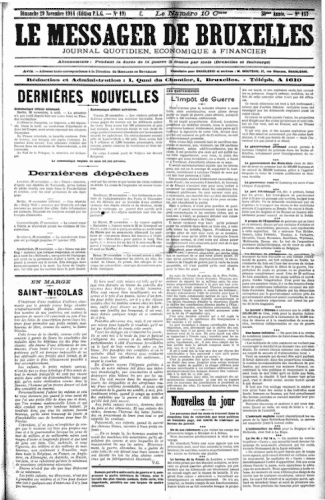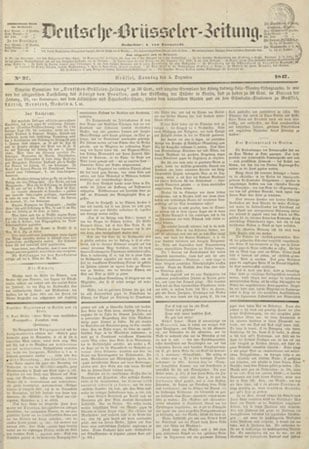The collection
In terms of diversity and volumes, KBR’s collection of newspapers is by far the largest in Belgium. From seventeenth century journals to last week’s papers – we will find them in our collection.
- Printed newspapers have to be consulted in the general reading room.
- Many newspapers are digitised and available online.
- About one quarter of all the titles can only be consulted on microfilm.



How to search for a newspaper?
Online
- Via the online catalogue
- Via BelgicaPress (full-text search)
- Via The Belgian War Press
In the reading room
- For defunct newspapers: in the catalogues on cards
- alphabetical
- topographical
- chronological
- On microfilm (almost 600 Belgian newspaper titles): using the catalogue of microfilms “Mic Perm”
How to consult newspapers
- Newspapers have to be consulted in the General reading room. Seat reservation is required.
- Please reserve all your items 2 working days before your visit to the reading room. You may reserve a maximum of 6 volumes.
Digitised newspapers & microfilms
You have remote access to all digitised newspapers via BelgicaPress. You simply need to log in with your MyKBR account. Access to newspapers subject to copyright is only allowed if the documents will be used as illustration for teaching or for scientific research. Read more on copyright and the digital collections.
The newspapers on microfilm and the digitised newspapers are also directly accessible in the reading room.
Printed newspapers
Newspapers that are still published are available (bound in volumes) about three months after their publication.
Please consult them on the tables set up specifically for that purpose and treat and browse the volumes with the utmost care.
You may take digital photographs of newspapers if they are intended for personal use. However, you may not use a flash or a handheld document scanner.
You can request digital reproductions of newspapers via the online catalogue.
Special collections
You can only consult items from the special collections Gaston Mertens and Vandermaelen with written permission from the curator. You can reach him via oerpug.qrfrher@xoe.or.
How the collections are distributed
KBR has collected newspapers since the library’s founding in 1837. They are kept in different departments, as a consequence of the rarity, age and nature of the newspapers, the evolution of library technology and the processing methods.
1. Newspapers and Contemporary Media Department
- Approximately 2,000 different Belgian newspaper titles in broadsheet (grande presse) and/or large format (measuring more than 50 cm in height). These newspapers belong to the collection “J.B.” (Journaux belges or Belgian newspapers), which covers the period from the last years of the 18th century up to today.
- Around 500 different foreign newspaper titles in broadsheet format (grande presse), either as original copies or on microfilm.
- A few collections of precious works, such as the Gaston Mertens Collection (Fonds Spécial XLVIII), which has more than 60,000 specimens from some 1,650 Belgian municipalities (dating from the mid-seventeenth century to 1948), and the Philippe Vandermaelen Collection, which contains 2,405 specimens of nineteenth century foreign newspapers (mostly from Europe and the United States).
The holdings in this department were primarily acquired by purchase, donation and as part of the Legal Deposit (since 1966).
2. Rare Books Department
- Old journals and magazines (seventeenth and eighteenth centuries)
- Clandestine newspapers dating from both World Wars
- Unusually exceptional publications (including Vlaemsch België, Deutsche Brüsseler Zeitung and Le Charivari belge)
3. Contemporary Books Department
- Hundreds of petite presse titles, i.e. weekly or monthly journals or magazines focusing on social issues, trade unions, health insurance, political matters, professional subjects, student matters or artistic fields. These journals and magazines are usually smaller in size than broadsheets (grande presse).
- A large range of American newspapers, journals and magazines coming from the Center for American Studies.
